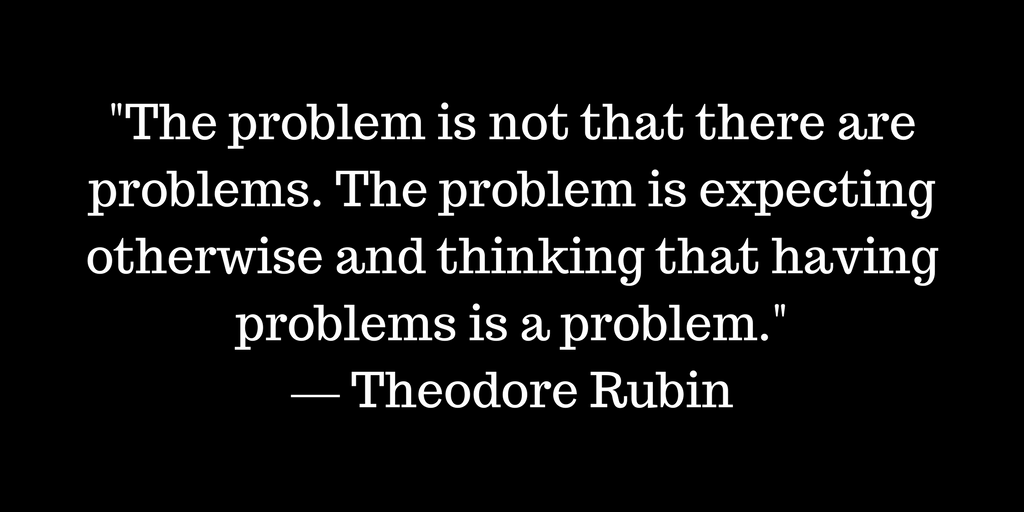At the start of my supervisory career, I was taught that you NEVER surprise the boss with a problem.
Check.
No surprises.
Got it.
Huh?
Over time I became quite puzzled by that expectation because a lot of the day to day problems I encountered weren’t part of my plans. They were, in fact, surprises. Sure I might suspect a series of events could be leading to a problem but how could I be certain? Most of the leaders I worked for at the time also didn’t take too kindly to hearing about a problem that might happen.
I could be either the boy who cried wolf or the bearer of bad news. Given these two options, I figured the best approach was to avoid any mention of problems unless absolutely necessary.
Maybe the point of this upper-management maxim was to negatively motivate frontline managers to prevent or fix problems before they reached the executive level. A reasonable theory I suppose, but I found it to be counterproductive.
The message I heard was, “If you bring me an unexpected problem it is going to be painful and if you don’t bring it to me, and I find out about it, then it will also be painful”.
The only option to avoid pain was not to have problems, or at least to maintain that illusion.
As a result of the pressure to keep the bad news off the radar, problems lingered too long and grew unnecessarily large and complicated.
I missed out on the opportunity to learn and grow through working with my manager to creatively solve the issues and he missed out on vital information that might have helped him lead the team more effectively and achieve better results.
Don’t do this to your team.
I recall a situation early in my tenure where the schedule we received for marketing collateral raised questions. It called for us to put a marketing piece for one brand into the billing statements for a different brand. When the team brought it to my attention a few thousand of the pieces had already been processed.
We were told to religiously follow the schedule we received and that Marketing was responsible for its accuracy. Our job was to get the work out the door as ordered, not to ask questions.
And so there I was with a surprise problem. Thankfully my team felt comfortable with telling me about it before it became much bigger.
I stopped production, which was a big no-no, and made the long trek upstairs to the executive level. Despite my good intentions, I spent most of my time explaining how I could possibly let this happen rather than why it happened and how it could be prevented in the future. The underlying problem was never addressed. It was a classic case of shoot the messenger.
However, One good thing did come out of this experience. I decided that I was going to operate by a different set of rules.
Old Management Rule:
- Never surprise me with a problem
New Leadership Rule:
- Please tell me about the problem
As leaders, we should be asking for trouble.
Invite the people on your team to surface problems early and often and then pay careful attention to what these signals may be telling you. Don’t take the problem and make it yours, instead ask questions and be a mentor. Think of this as your side of the engagement formula.
Get out of your office and go see for yourself. Talk to your team. Ask them to tell you about the challenges, concerns, and frustrations they are experiencing then follow through with a response or invite them to work together on a resolution.
Bring learning and accountability together so that the focus is on prevention and solutions rather than blame and consequences. These are not mutually exclusive goals. Fear shrinks our capacity for innovation and slows things down. There is a better path.
This approach requires persistent effort and consistent behavior because people on your team may have experienced the same treatment over the course of their lives or careers. It takes time to build trust.
Eventually, you will create a culture where dealing with problems is a natural part of the daily, creative work you do together instead of something to be feared, avoided or deflected. In the long-term, the number of problems that you are pulled into will decrease not out of fear, but because your team is becoming more competent, confident and independent.


Dee Tran
Dear Scott,
I love this post! What great insights you share. Thank you so much. Ask our staff to bring problems and concerns to leaders and solve them together and creatively.
Scott Mabry
Thank you, Dee. I think this really does make a difference.
R Johnson
Right on! I work extensively with new employees and people new to our profession. They seem averse to bringing problems forward no matter how much I encourage them to do so. It think it’s still a matter of building trust and showing every day that we want to help them grow…as they say…”help them grow, or watch them go.”
Scott Mabry
Sorry for the late response - things got a little hectic. 🙂 Really appreciate the thoughtful comment and great example.It can be a hard paradigm to break.
Five Blogs – 12 September 2017 - 5blogs
[…] Why You Should Be Asking For Trouble Written by: Scott Mabry […]